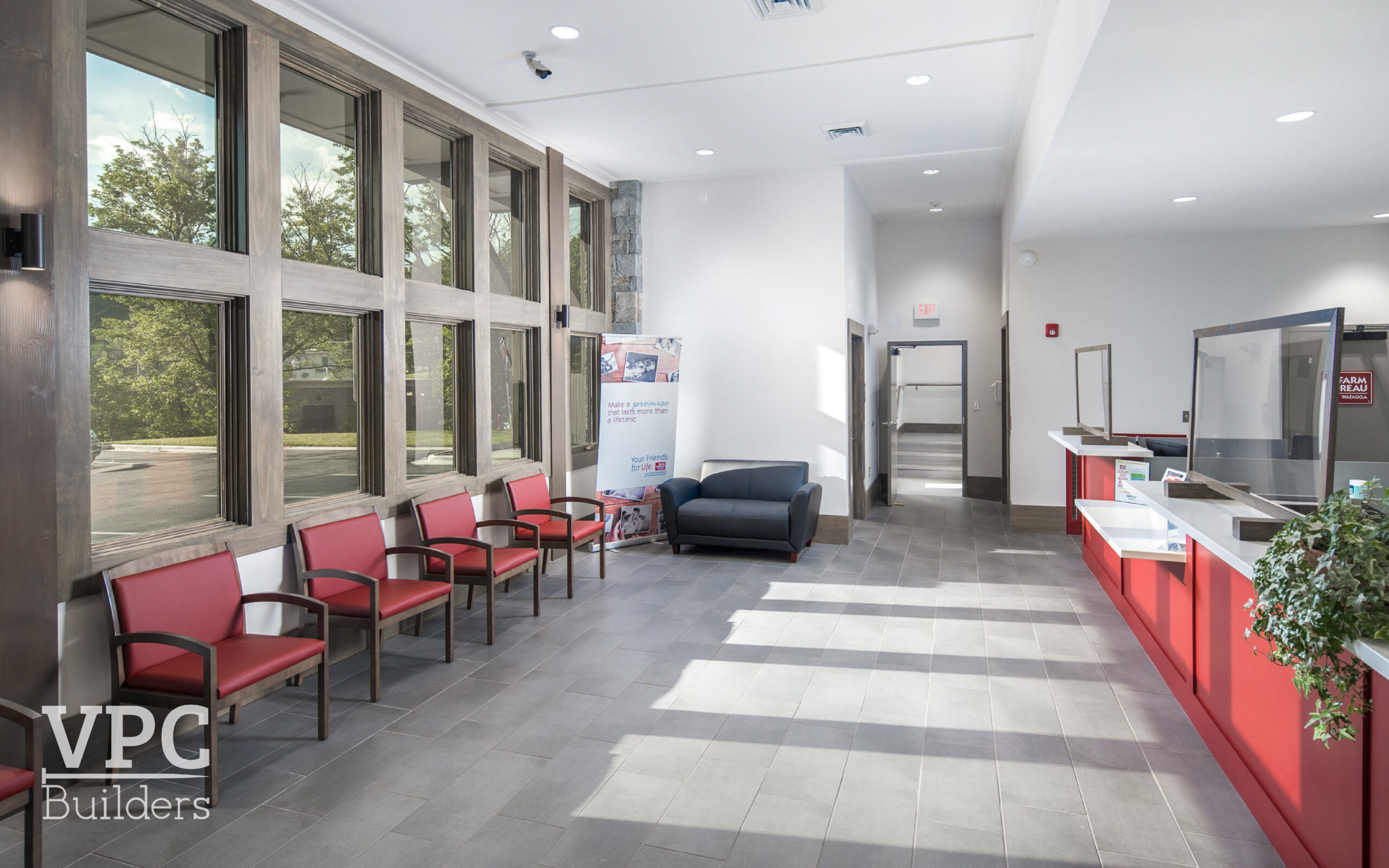Nonprofit construction represents one of the most meaningful challenges in the building industry. It requires creating spaces that serve communities while operating within tight budget constraints. Unlike commercial projects focused on profit maximization, nonprofit construction must balance functional requirements, regulatory compliance, and welcoming design with limited financial resources.
Successful nonprofit projects tend to come from specialized expertise in value engineering, code compliance, and community-centered design approaches. Despite hosting public events, these properties frequently operate under intense scrutiny, making thoughtful planning essential from the outset.
In this article, we’ll explore the essential strategies that can make nonprofit construction projects more successful.
Contact VPC Builders to discuss your nonprofit construction needs
The Realities of Nonprofit Construction
Every nonprofit construction project starts with the same fundamental challenge: doing more with less. Your funding might come from grants with strict requirements, community fundraising, or a combination of sources—each with its own set of rules and expectations.
Unlike commercial projects, your building needs to work for everyone. Staff members need functional workspace, volunteers need accessible areas to contribute, and community members need welcoming spaces that encourage participation. That’s a lot to ask from any building, especially when every dollar counts.
The key is understanding that constraints can actually drive creativity. Some of our most innovative solutions have come from working within tight budgets and specific requirements.
Smart Design Maximizes Impact
The most successful nonprofit facilities are those designed with flexibility at their core. Your space might host intimate board meetings in the morning and community dinners at night, and this kind of dual nature requires thoughtful planning from day one.
Flexible Space Solutions:
- Moveable partitions that transform one large room into multiple smaller spaces
- Built-in storage that keeps event supplies accessible but out of sight
- Technology infrastructure to support everything from presentations to live streaming
- Furniture systems that can be quickly reconfigured for different events
Ways to Cultivate a Welcoming Atmosphere:
- Strategic natural lighting to make spaces feel larger and more inviting
- Warm color palettes and natural materials that create comfort without premium costs
- Community art installations that add character while celebrating local talent
- Landscaping with native plants that look great and require minimal maintenance
The goal isn’t to create the fanciest space, but to create one that feels authentic to your community and supports your established mission in every aspect.
Accessibility Considerations and Compliance
True accessibility goes beyond meeting ADA requirements, especially for nonprofit organizations. Effective nonprofit construction revolves around creating spaces where everyone feels genuinely welcome and able to participate fully. This starts in your parking lot and continues through every door, hallway, and room.
Universal design principles help you stay compliant with regulations—but more than that, they maximize the potential benefit for everyone who interacts with your space. Wider doorways make wheelchair access effortless while also accommodating deliveries and large groups. Good lighting helps those with vision challenges while creating a more pleasant environment for all users.
Essential Accessibility Features:
- Generous accessible parking located near all main entrances
- Smooth pathway surfaces and gentle slopes that feel like natural inclusions
- Welcoming entrance design that’s simple and intuitive for all users
- Clear sightlines and logical layouts that help visitors navigate confidently
- Flexible seating arrangements that accommodate diverse mobility needs
Community Involvement Builds More Than Walls
One of the most rewarding aspects of nonprofit construction is the opportunity for community involvement. When done right, this participation creates a tangible sense of community ownership, reduces project costs, and strengthens the bonds your organization serves.
In even the best of situations, volunteer coordination requires careful planning. We’ve seen well-intentioned help become costly delays when not properly managed. The key is matching volunteers with appropriate tasks while maintaining professional standards and safety protocols.
Successful Community Engagement Strategies:
- Skill-based volunteer matching that puts people’s talents to good use
- Organized volunteer days with clear tasks and proper supervision
- Donor recognition opportunities to honor supporters throughout the project
- Regular community updates to maintain excitement and engagement
- Local business partnerships for materials, equipment, and professional services
Remember, the goal is building community support alongside your facility. Every person who contributes to the construction becomes an advocate for your mission, and that’s a good thing. Just remember where to draw the line in terms of safety and compliance—when in doubt, rely on your local professionals.
Long-Term Success Planning
Here’s an important truth: your construction decisions today have the potential to impact your organization’s operations for decades to come. This is why effective nonprofit construction focuses on long-term sustainability rather than just upfront cost savings.
Energy-efficient building systems might cost more initially, but they’ll save money every month through reduced utility bills. Durable materials in high-traffic areas help to prevent frequent repairs that might strain operating budgets. Quality mechanical systems reduce emergency maintenance calls that disrupt programming. In short, it pays to think long-term about your investment.
Let’s Build Something Impactful Together
Your nonprofit construction project represents far more than just another commercial addition—these are investments in community infrastructure that serve essential social functions for the places we call home. Every church fellowship hall, every community center meeting room, and every nonprofit office space plays a role in strengthening the fabric of our communities.
At VPC Builders, we know the value of healthy communities better than most. After decades of service in and around our homestate of North Carolina, we’ve seen the impact that a single good construction project can have on a place. That’s why we aim high with everything we do. If you’re ready to start building something meaningful, VPC is here to help. Get in touch today to tell us about your mission.
Want to learn more? Contact VPC Builders today.

